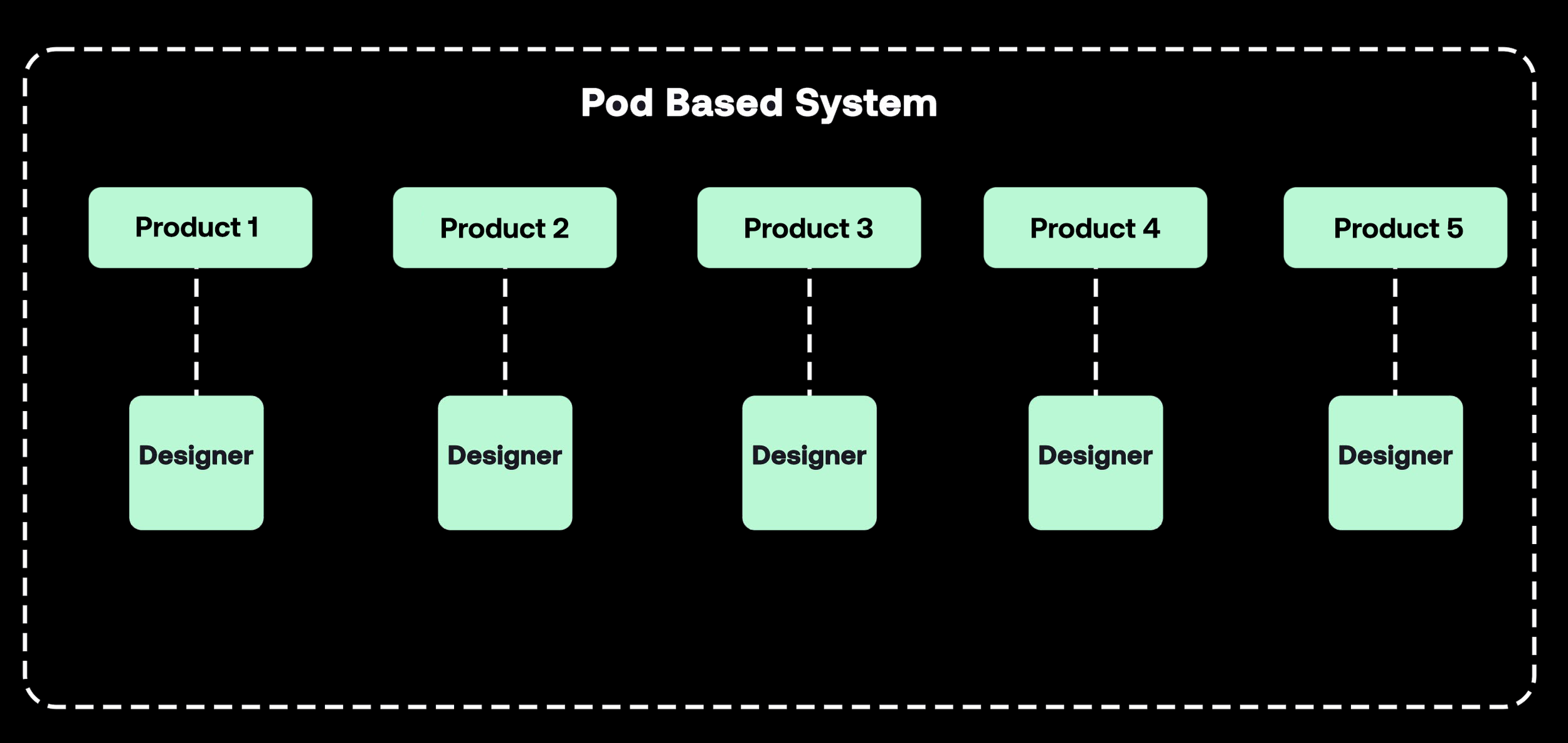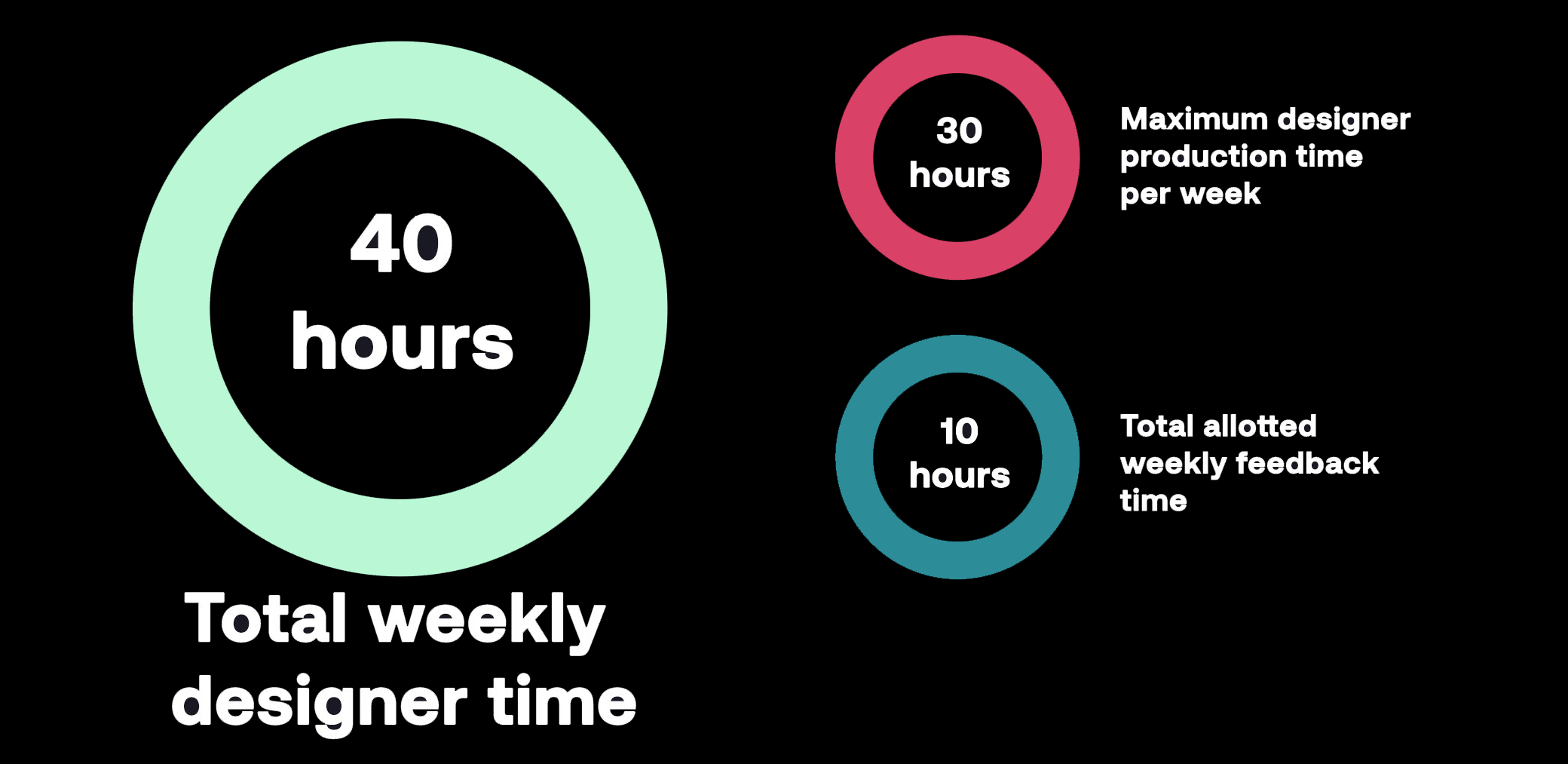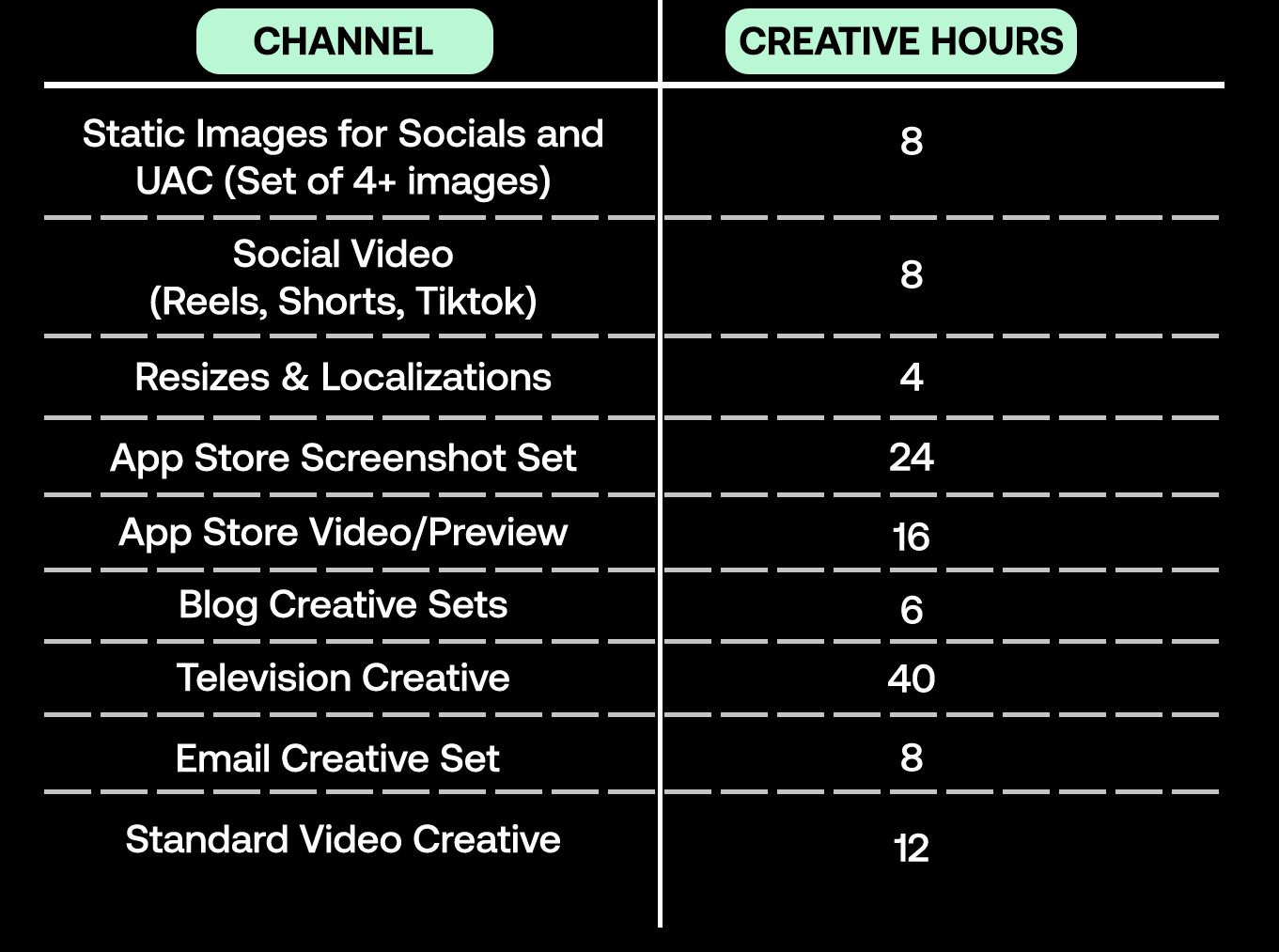Creative Operations
The Science of THE ACS Creative Process
The creative process is often seen as a complex task that often mystifies marketing or creative teams. From my nearly 12 years designing within, managing, and leading creative teams I can tell you it certainly is not. At its core creative process is a people management process focused around a singular task that can not only increase the overall output of creative production workflow but also increase transparency of deadlines and progress across the entire company. From experience, after implementing our creative process we saw an increase in production output and a massive uptick in creative quality due to increased transparency and clarity through feedback channels that has visible results.
Creative Metric comparison before and 3 years after ACS implementation
Metrics taken from internal reporting systems
How does it start?
The important factor is understanding the overall needs and potential scale of your creative team. Don't think right now, instead build a process for what the team will be in 2 years while maintaining ease of use in the short term. During my time at Teltech as the Senior Creative Manager, I grew our creative team from 2 designers to 12 all while managing the creative output for 5 different applications and separate marketing needs. This led to a desperate need for proper management of timelines and transparency for our marketing and engineering teams. So with that in mind, we designed a creative process system from the ground up.
With that, we asked 5 important questions as our primary framework
What is our desired creative output?
What are our current process pain points?
Who needs to be involved in the creative process?
What are our average creative timelines per creative type
What are our team’s individual skillsets?
These 5 questions became the core of how we designed the process.
Old Versus New
Through my many years of experience, I have found that there are two standard creative team types that are usually the primary culprits when a creative team experiences process or organizational issues “The Standard System” and the “Pod System”.
Standard Creative Model
This system is by far the most common creative system due to its simple nature. The product or marketing team responsible for that specific product sends a request in for a creative whether video, static, or whatever it may be and the creative team puts it in a large list ordered based upon current priority and they get to it when they can.
Cons
Pros
Can take projects as they come in
Easy priority system with little management lift
works well with a small amount of creative work
Easily overwhelmed
Can’t scale with increased product demand
Top products are always prioritized leaving smaller efforts delayed
Often chaotic as far as content scheduling is concerned
Reactionary system by nature rather than planning ahead
Pod Based Agile System
The Pod-Based system is an adaptation of the Agile Product pod-based system to fit creative teams and marketing needs. The system is built off the idea that you have a single designer or design team (depending on product scale) to meet each product’s needs. This allows designers to directly interface with the product in order to become experts in the needs of the individual product. While one can see it solves some problems in the standard system it also creates new problems and issues.
Pros
Allows each product in your company to have individual design attention
Increases creative volume by the nature that every product is having its needs met.
Allows designers to become experts in the individual brand aspects of their assigned product.
Cons
Creative output is directly tied to team size.
System is easily overwhelmed if one product has a large creative volume
Often isolates individual designers from overall business and needs
No room to be agile if an extra designer is needed to meet unexpected creative volume.
Doesn’t take into account other creative roles and factors that are necessary for healthy products. I.E Branding, SEO efforts, and general business needs
The Main Issue
The main issue with these two systems is they are more static in their creative output and ability to meet business needs which, as many marketing teams and start-ups know is not the case. At one moment you have a normal creative output and the next you suddenly have such a need for a single product it will overwhelm your team and before you know it deadlines are being delayed and targets are being missed. The root of this is these systems aren’t agile enough to meet demand and often when adapting the agile framework to the creative process it is done based on product need and not from the mindset of how creative teams work and how the types of work they do are divided. So with that in mind, I developed a system that would put the creative team first while still maintaining the agile system framework.
A.C.S - The Agile Creative Scheme
Now to be clear this is a loose framework that is designed to be moved around based upon your individual creative needs and we will discuss how you will figure out those needs below, but let me explain the overall idea of the framework first.
Creative Types
Creative types are the typical creatives that your marketing team needs for successful advertising efforts. These are not meant to encompass everything your marketing team needs just creatives that are either in the highest volume across the business such as static images, and sales documentation, or typical content generation or are creatives that have a high standard of quality and require the most time to produce such as app store screenshots, television creatives, or large scale productions. Generally, it is recommended to take a broad-strokes approach to creating these creative pods to keep the process moving quickly in the assignment phase, but that should come down to operational discussions and what fits your business best. So once you’ve figured out what those creative types specifically are your ready to start the assignment phase.
Designer Assignment
Whether you’re working with external agencies or internal company teams it is important to understand not only the specific skillset of your teams or agency as well as the time it takes to create a single creative in one of your chosen types from concept ideation to productions to review and final polishes. depending on the type of creative this will typically vary based on quality needs and creative type but in general this is what I’ve found to be the rough average of creative production.
To properly scale design time to your specific needs let’s start by dividing the time down to a single designer.
Typically what I have found is that you should budget 10 hours weekly for review and polish. This includes allowing marketers and stakeholders the time to review the creative and leave notes in a timely manner not only the time it takes to act upon the review notes.
That leaves roughly 30 hours a week to work on creatives provided there are no issues with the request or reference, and the goal of the creative is clear (We will cover how to do this later)
The second table is rough estimates derived from my experience with our creative team, but you should realistically time how long certain things take so you know how to properly budget creative time
In the example you then would know that a single designer could realistically take on about 3 image sets on a weekly basis or a single designer can make app store screenshots for your product over the course of the week with he next dedicated to the video portion for your app store preview.
As a note this is not, so you can attempt to speed up timelines. This process is meant to be realistic and delays can happen if you go into this process looking to shave off designer production time it will collapse and fail. I have seen this happen firsthand. Trust your designer’s estimates.
Creative overflow
As you will no doubt notice almost none of those items on the table add up to 30 hours reasonably and that’s ok! In the bottom left of the ACS graphic, you’ll see a marker for Creative overflow. This is a crucial part of the process and what makes it agile. You will have times when for example your designer assigned to app store screenshots or live-action production will be unable to do work due to delays, timelines, or just the fact that you don’t do those creatives on a regular cadence. That is when the designer moves over to the design overflow tasks which are usually tasks that are not able to be reasonably budgeted in the normal scheme. This allows you to track what’s overflowing past your system and adjust needs accordingly. That can be done either by reassigning a designer temporarily who doesn’t have as many assigned hours if you have a sudden need for a certain creative type or as big as coming to understand that you may need to hire additional help within your department either via a full-time hire or freelance/ contract. The important thing is you can see and have transparency within your process not just from the design side but across the full business unit rather than having a nebulous task board or isolated designers who won’t always communicate the proper need.
Process Phases- Concept Generation, Production, & Review Stages
While the process at its core is designed around how to manage creative volume an important aspect is the requirements and standards you put in place for generating creative tickets for your creative teams. While this is somewhat dependent on the ticket-making and workflow management software you use certain standards should be commonplace. It is helpful in this effort if you think of the creative process in phases Concept Generation, Creative Production, and Review. Now the details of how this will work will be highly dependent on your business organization but you can find common themes via what each role is responsible for.
I.E instead of a Creative Manager you have a Lead Designer or instead of a Marketing Manager you have a Content Lead
Phase 1- Ticket Making and Assignment
Marketing Team members place tickets on the creative requests board in whatever workflow management board you use. These tickets should follow a standard scheme that works best to communicate what kind of creativity they are looking for. Be sure to include the platforms the ad will be placed on, the applicable sizes, any specific copy you are looking for, and especially if you have any reference for the visual design you are looking for. Note: It is acceptable to use another ad as a reference most designers can analyze and design a version of that according to your brand guides.
Those tickets will be evaluated on a weekly basis by the Design or Creative lead and assigned to specific designers according to the specialization they have been assigned first and then any overflow will be addressed and accounted for accordingly. Note: The ownership of assigning which creatives have priority will be a combination of the Creative Lead and whoever the manager of the marketing group would be
The designer will then be responsible for going through the ticket and following up with the ticket maker with any follow-up questions, communicating additional needs, and if there would be any perceived changes in the timeline. This is essential to the health of the creative team as it builds transparency and relationships with marketing team members which has been shown to increase creative function, ideation, and production speeds.
Phase 2 - Creative Production
While the majority of this is self-explanatory there are a few notes here
Individual designers are solely responsible for communicating timelines, deliveries, and any potential delays. This is very important in order to increase transparency and foster good communication between teams.
While it is understandable that creative may suddenly pop up without warning you must stress that they are put within the creative process board. While they do not need to wait for the weekly evaluation if the priority is high you need to continue with the transparent nature of the process so everything in production is visible and can be accounted for.
When a creative is ready to move to phase 3 and be reviewed the designer should upload a single size to your chosen review platform (Listed below) and tag all key stakeholders of the project and should include the lead designer and original requester of the ticket at minimum.
Phase 3 - Review and Polish
Now that a base creative is done and submitted for review there are a few things to consider while going through this final phase
Use review software like Frame.io or MarkUp.io these tools make in infinitely easier to share review copies via links, collect all feedback and easily highlight the specifics of any critique you have with the design.
Set a proper timetable for the review phase. A lot of MArketing teams are busy and move fast but from experience, the biggest delaying creative production is usually due to waiting for feedback. So talk to your marketing team and set a feedback window that in essence says “If you do not submit comments on the creative up for review in X amount of time then we will either move forward with the final polish or delay the creative until the next weekly cycle.” This puts ownership back on the stakeholders and makes clear any pain points in the delivery
Once any feedback has been collected and implemented into the the design the designer will then resize the creative for any additional relevant platforms and send over the final products properly named and in an organizable folder for future use if needed.
Common Questions
“I don’t have designers on my team but use freelancers or agencies does this still apply to me?”
Yes! You would simply add extra steps to the assignment phase of the process or adjust your timeframes. So for example you have your regular freelancer or agency you go to for a set of creatives that include multiple statics and even a few video creatives. Phase 1 would remain the same and in Phase 2 You would estimate with them how long they typically take for the full creative delivery that you have contracted them for and budget that time accordingly. Phase 3 would be slightly longer due to the time of contact and the agency’s overall responsiveness but again that solely relies on clear and responsive lines of communication. As a note typically the process is a little longer during the production and review phase as they often aren’t solely working on your creatives, but the theory is roughly the same with a few add steps.





